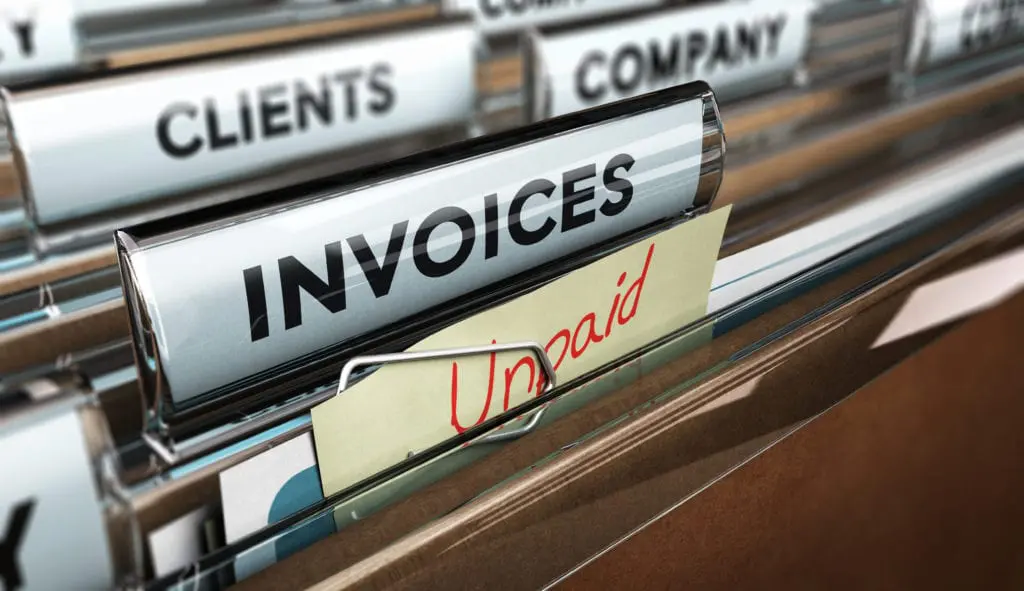If there’s one thing both businesses and vendors have in common, it’s their dread of late payments and poor B2B payment processing. Over time, late B2B payments paint a blurry picture of budget, spend, and cash flow. Late B2B payments lead to a never-ending game of catch-up, resulting in poor relationships and bad debt that could cost a fortune. To avoid these problems, learn the ins and outs of B2B late payments for both businesses and vendors.
The #1 Reason for Late Payments
The list of reasons why companies pay vendors late is extensive. It could be dissatisfaction with services, or the invoice was lost in the shuffle. But the most common reason for late B2B payments is limited control and visibility into the accounts payable cycle. Antiquated, slow, paper-based payment processing limits visibility into payment details, including due dates and amounts. Manual AP workflows also run the risk of duplicate payments to vendors and payments to fraudsters based on fake invoices. Let’s not forget that paper processes drive up B2B payment processing time, costs, payment problems, and manual entry mistakes.
According to 2018 ePayments benchmarks, it costs $11.57 and eight days to process one invoice. Even though the B2B payment processing time and costs have decreased since last year, the average company spends more than they should. If your organization relies on manual invoice approval workflows, chances are the approval lag time and lack of visibility make it nearly impossible to pay vendors on time.
Paystream Advisors shares the number one problem leading to late payments—unfortunately, the invoice is to blame. Long invoice approval time is the top reason for late B2B payments and missed discounts. Missing invoice information, manual routing, and invoice exceptions are the major payment hurdles.
Suppliers Suffer When You Pay Late
The longer your business waits to pay vendors, the more anxious vendors become, and the number of payment days outstanding can be detrimental for your company. A PYMNTS.com article shares that globally, it takes 66 days for a company to pay a supplier and that’s likely to worsen next year. Despite the trust vendors give companies, Euler Hermes points out the pitfalls suppliers face when your company takes too long to disburse payments.
“In some sectors, everyone accepts late payments. But in others, such as consumer industries, they want shorter payment times because margins are thin and they need the money to buy more supplies.”
Naturally, B2B payment processing is all about speed, and the only way to save suppliers from worry is to lower the days outstanding. The faster invoices are processed, the quicker payments are disbursed. There are a few things your business can do to save your suppliers from worry without heavy lifting.
- Inform vendors of your payment schedule. If they’re aware of your internal schedule, they may be able to work with you by changing your due date or working out other payment arrangements.
- Be flexible with B2B payment options. Your vendor may accept paper checks but learn about other paperless payment options they offer to see if your business can send B2B payments faster. On the other side of the coin, vendors should explore other electronic payment options. For example, commercial card programs increase the flexibility of days payable outstanding (DPO).
- Keep vendors up to speed. Most AP automation supplier portals allow vendors to check the status of the payment 24/7 without phone calls and emails. Keeping vendors up to date provides transparency and strengthens the buyer-supplier relationship.
- Pinpoint the right people to talk payments. Designate one AP leader from your organization to speak with one AR leader from the vendor’s end. Limiting communication between these two prevents confusion.
Paying a Financial Fortune of Late Fees
Vendors must charge your company for late B2B payments for several reasons. They need to monitor their cash flow just as your finance leaders do. There’s also the costs of rendering the service or sending goods you promised to pay. More often than not, your small or mid-market vendors cover these costs upfront because they trust you’ll pay them back. When your company doesn’t pay on time, they run the risk of debt and being short on cash flow.
Regardless of the reason, vendors have the right to apply late charges for missing the payment due date. Business.com points out most suppliers stick to charging 10 percent at most, while in some states, they’re prohibited from charging late fees at all. But for vendors that can, fee details should be outlined early and clearly in the buyer-supplier relationship to avoid any unpleasant surprises. Late fees should be clearly noted in both official letters and invoices to prevent going unnoticed.
To avoid the hassles of late payments and fees, most suppliers offer early payment discounts. John Mariotti, CEO and President of Entrepreneurial Group, shares his buyer and supplier experience in an article and highlights a few of the reasons why vendors offer discounts as early payment perks. According to Mariotti, the reasons are simple:
- Companies want their money sooner rather than later.
- They want to make sure they’re at the top of the list of your vendor payment priorities.
- They worry less about the risk that the funds may never come.
- They have more working capital without needing to gather funds from other sources.
- With more money from payments, the less they have to borrow from loans or other financial services.
For buyers, early discounts come with more than a reduced payment and savings. There’s improved cash flow, better vendor relationships, and better spending visibility.
How electronic invoicing works
Here’s how eInvoicing works. After invoices are entered into the system, they are automatically coded and assigned to the appropriate invoice approval workflow. eInvoicing allows AP specialists and approvers to electronically review all invoice details and see where the invoice is in the approval process. eInvoicing also allows your administrator to set up automated approval reminders to encourage leaders to approve ASAP to avoid late payment fees. With automated bill payments, your employees will be able to focus on assessing data instead of explaining late B2B payments and fees to leadership.
Finding the right solution to the late payment problem can be tricky. With all of the FinTech buzz, it’s hard to determine what technology is best. If you’re not sure where to start, answering some of these questions can help.
- How often does your accounts payable department make late payments?
- How much money is wasted in late fees and interest?
- How does B2B payment processing work for your AP department? What’s the biggest bottleneck?
- Why are payments made late? How can the business do better?



